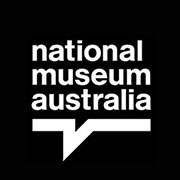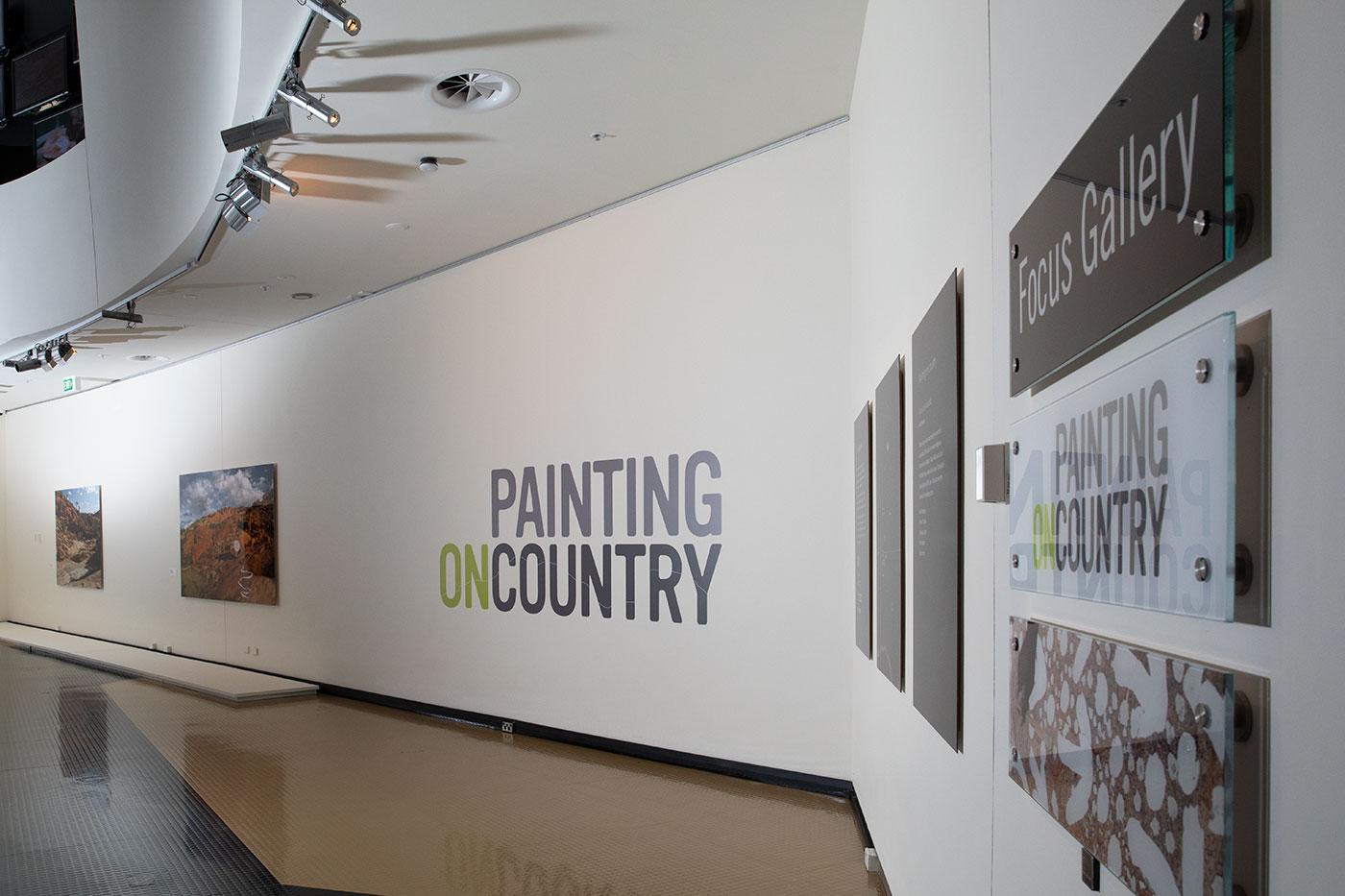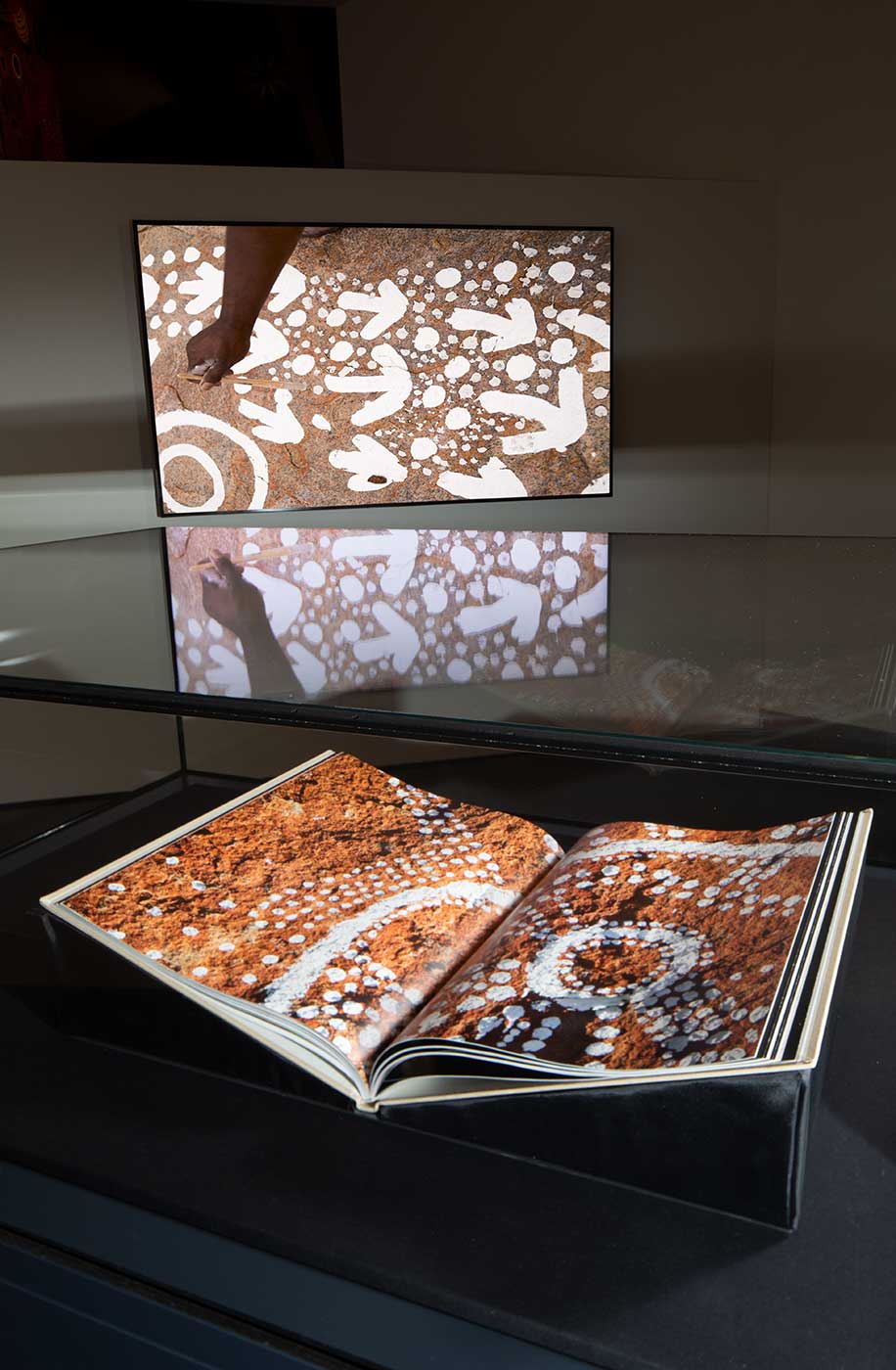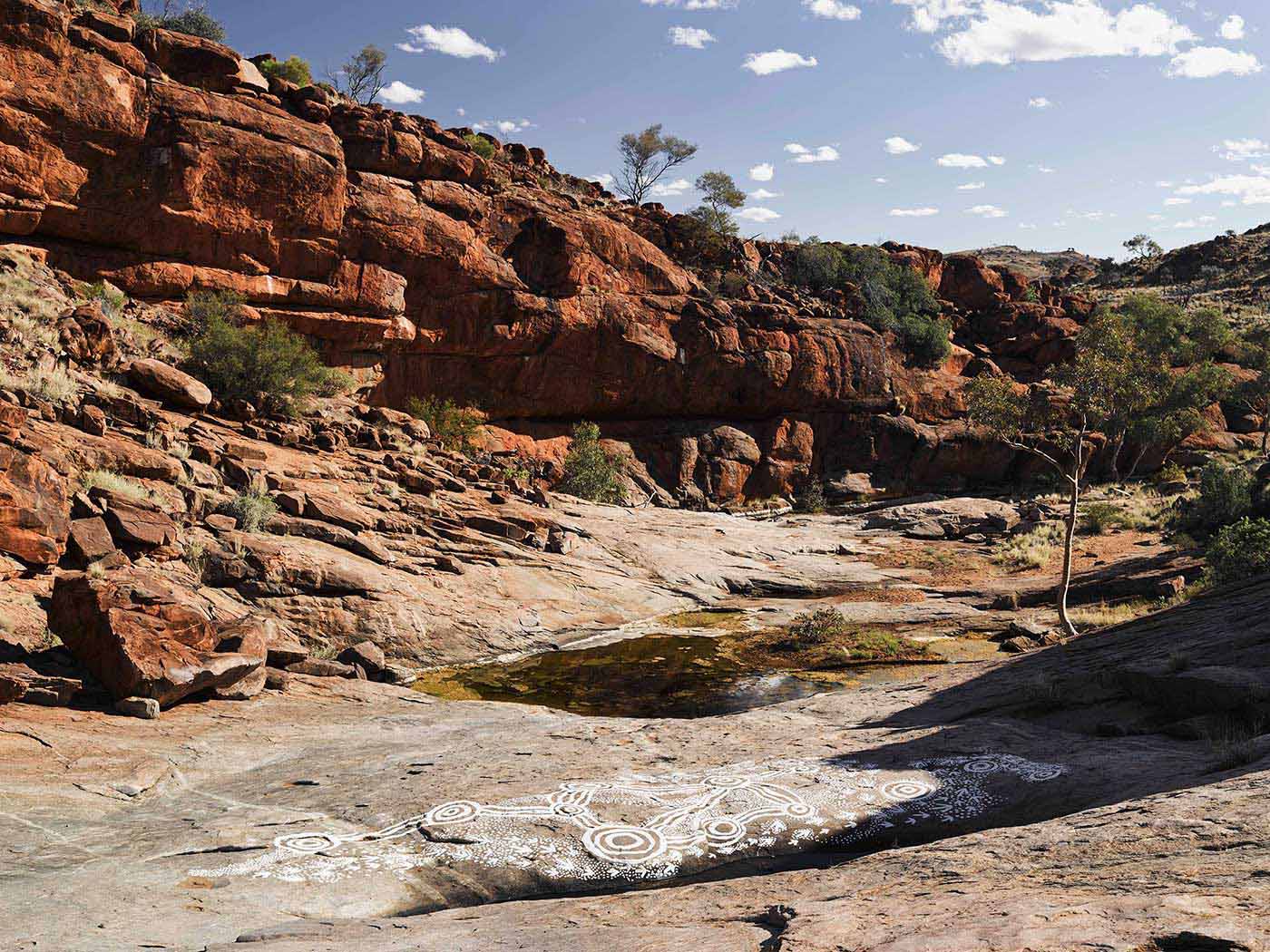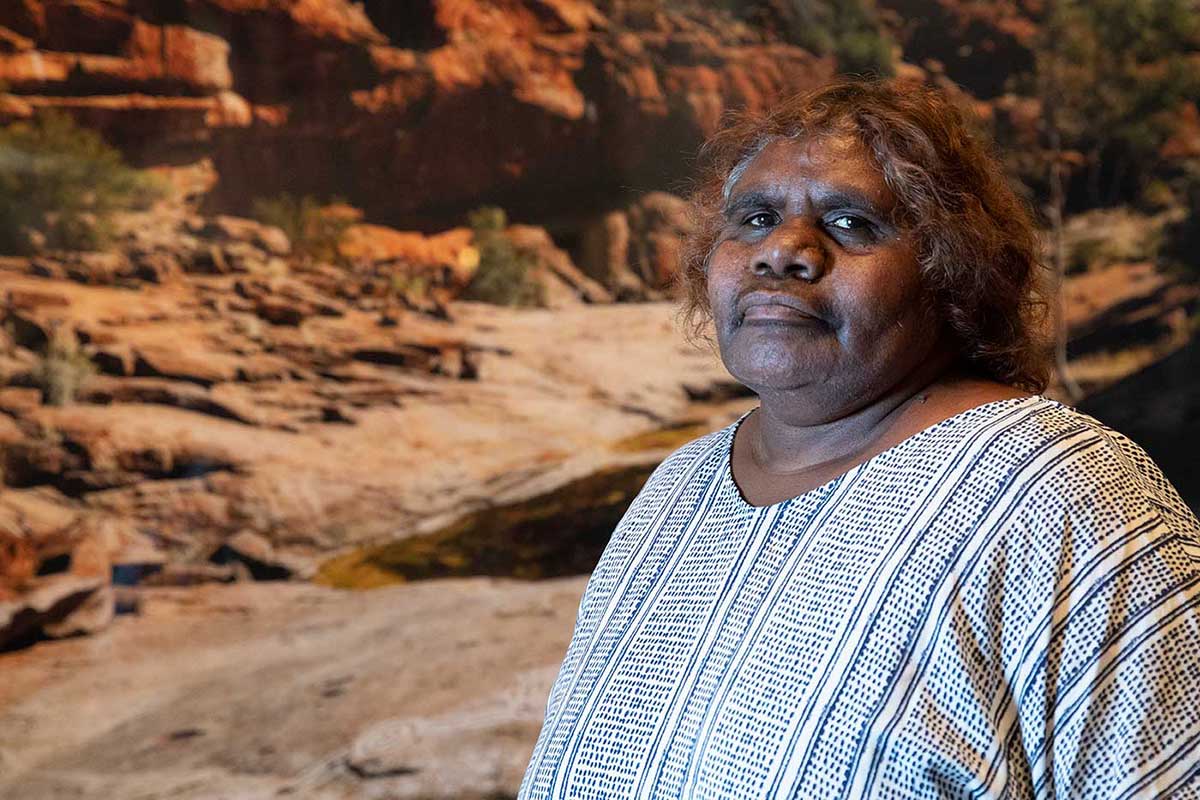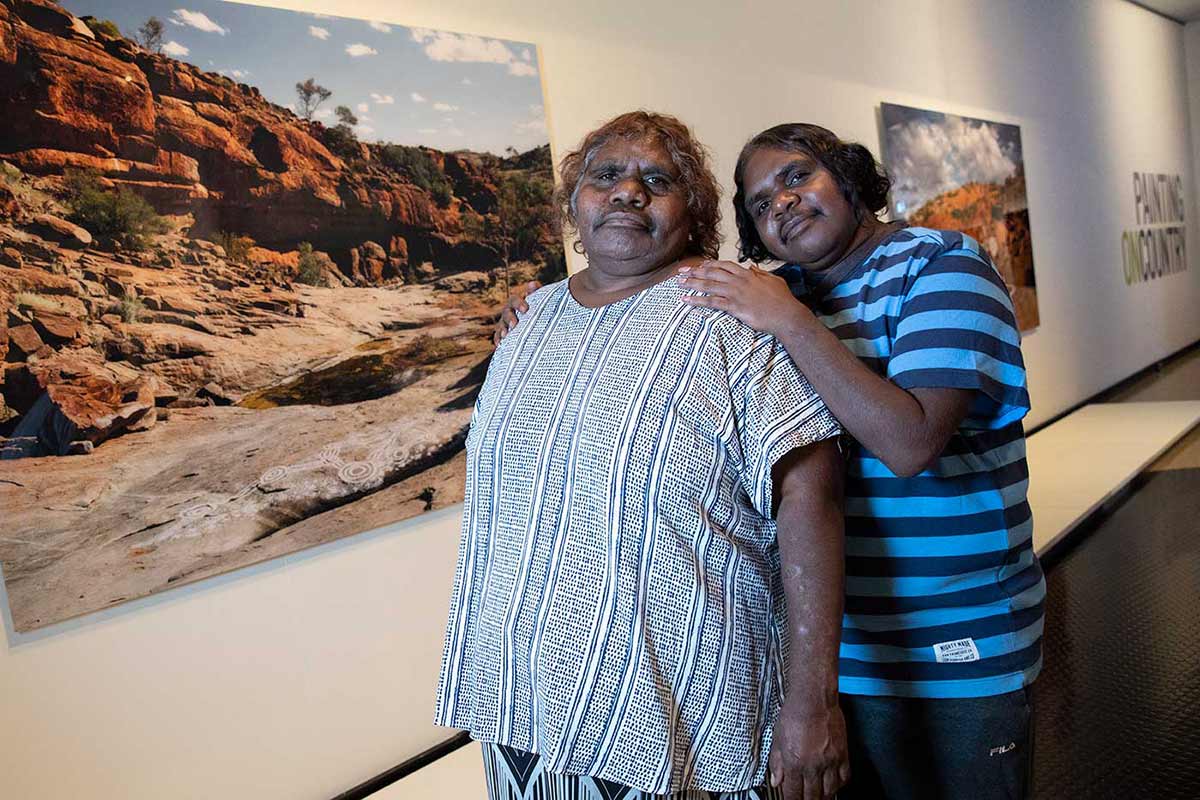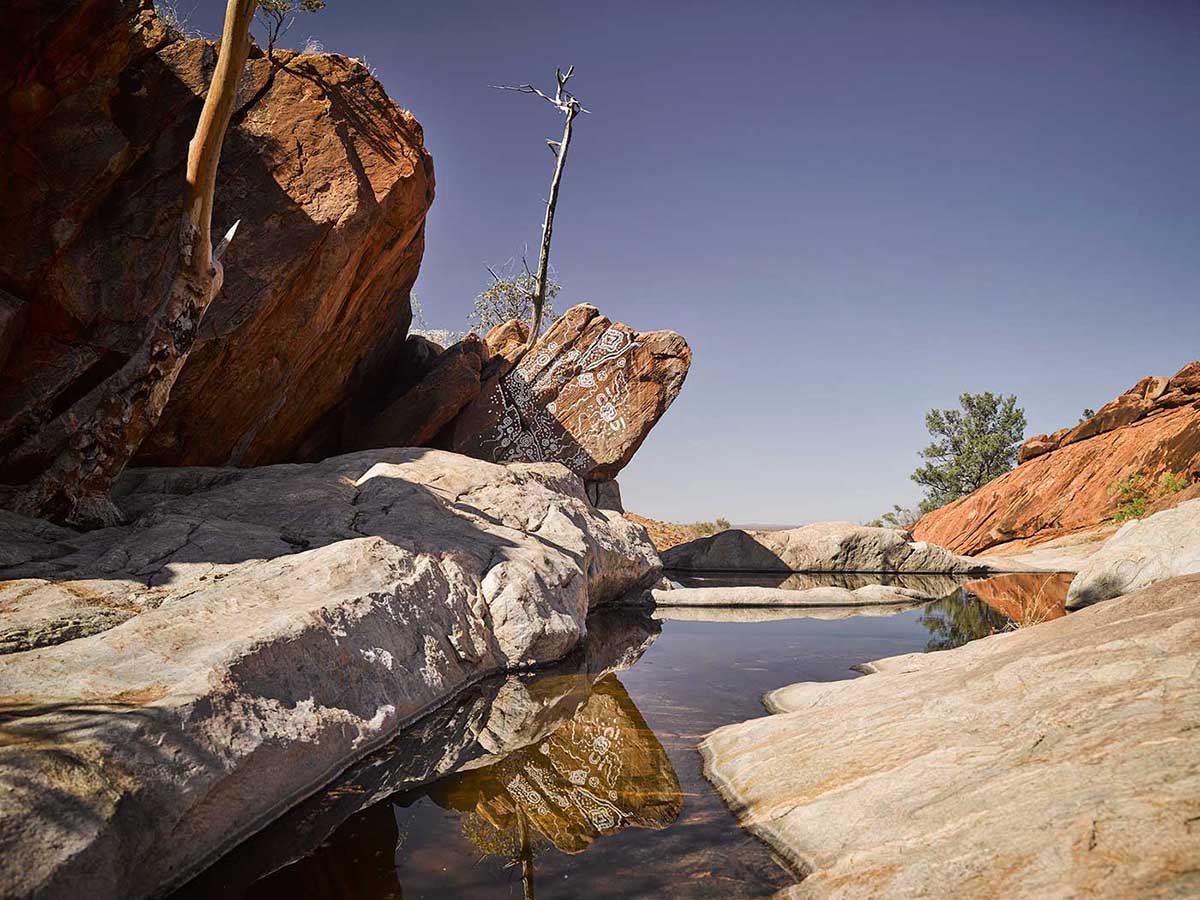Painting on Country is an innovative exhibition featuring the work of five senior artists from Tjungu Palya Art Centre, located in the remote Anangu Pitjantjatjarara Yankunyjatjarra (APY) lands in the north-west corner of South Australia.
The National Museum of Australia partnered with Tjungu Palya to present Painting on Country in the Focus Gallery, bringing a series of spectacular artworks from the heart of Australia into the political heart of the nation.
Bridging ancient and contemporary
Painting on Country was devised by Tjungu Palya Director, senior lawman and artist Keith Stevens. Stevens’ vision was to re-invigorate the ancient practice of painting directly onto land.
Keith Stevens:
This is a very old idea. An idea that came to us through our ancestors.
Together with fellow senior lawman and artist Bernard Tjalkuri, the pair enlisted Tjungu Palya’s senior artists, Angkaliya Curtis, Marita Baker and Beryl Jimmy to join the project.
Their vision was to re-invigorate their ancestor’s practice of rock art and document the work using the highest quality cameras and printing technology. They planned the creation of large-format works, where viewers could feel immersed in the landscape. The scale of the works elicit feelings of awe and wonder — an invitation from the artists to imagine the sensations of being on country.
Bernard Tjalkuri:
Maybe when people see these photographs in the gallery and they are walking around them they might think about and feel what it is like to walk around in our country.
Each artist selected a site on their respective country to paint, choosing sites in and around the community of Nyapari, including Kanpi, Watarru and Cave Hill.
Ephemeral artworks
To create the rock paintings, the artists used tutu, an organic white pigment, ground down and mixed into a paste. Just as their ancestors have done for millennia, the artists’ painted country with country.
The paintings were ephemeral, only a handful of people ever saw them in the flesh. The paintings themselves are gone now, washed away in the first summer rains. Yet their legacy lives on in digital form, captured in stunning detail by photographer Leopold Fiala.
The collaboration
The artists commissioned Fiala, a professional photographer based in Berlin, to collaborate with them. The result is a series of six spectacular photographs, printed at a huge scale, measuring over two metres wide and face-mounted on highly polished acrylic.
Like all great works of art, the rock paintings are compelling, aesthetically appealing and challenging. They are also an act of resistance. It is the first time that these artists have painted on rock.
Keith Stevens:
A long time ago when we were young our fathers, and their fathers made drawings on rock to teach people but this is the first time that we had done those drawings.
Rock art in Australia
Australia has over 100,000 known rock art sites — a practice of cultural inscription directly onto the land that transmits and retains knowledge over millennia. Rock art demonstrates continuous connection to country for Indigenous Australians, and celebrates one of the world’s oldest living cultures.
There is the popular perception that rock art ceased with the arrival of Europeans. However, Painting on Country reveals the evolution of rock art in Australia by presenting this ancient practice as an expression of contemporary art.
From Nyapari to Canberra
Painting on Country was officially opened on Thursday 14 March 2019, attended by Painting on Country artist Marita Baker. Baker travelled with her daughter, Sharon Peters, and enjoyed a few days sightseeing in Canberra, including visiting the Aboriginal Tent Embassy on the lawns of Old Parliament House.
Canberra is a long way from Nyapari, home of Tjungu Palya Art Centre. This distance can be measured in kilometres but also by economic, environmental and cultural markers. For the National Museum of Australia, forging and maintaining successful partnerships like this one aims to bridge that distance.
Painting on Country is presented in partnership with Christina and Trevor Kennedy and the Tjungu Palya Art Centre.
In our collection
